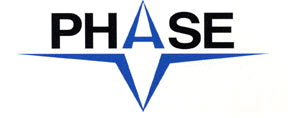MARCIA A. TESTA, SERGIO SALDIVAR-SALAZAR, MAXWELL SU, JOHANNA F. HAYES, DONALD C. SIMONSON, Boston, MA, Wellesley Hills, MA
Continuous Glucose Monitoring (CGM) Provides Enhanced Sensitivity Compared with Self-Monitored Blood Glucose (SMBG) for Detecting Hypoglycemia during T2D Clinical Trials
Author Block: MARCIA A. TESTA, SERGIO SALDIVAR-SALAZAR, MAXWELL SU, JOHANNA F. HAYES, DONALD C. SIMONSON, Boston, MA, Wellesley Hills, MA
Documenting hypoglycemia during clinical trials relies primarily on SMBG ≤ 70 mg/dL (3.9 mmol/L) with or without symptoms; however, hypoglycemia unawareness, sleep, and prandial-based sampling might lead to underestimation and lower detection of treatment differences. To quantify sensitivity and detection rates using CGM vs. SMBG, we analyzed hypoglycemia (Hypo: glucose ≤ 70 mg/dL) data from 73,941 SMBG samples collected simultaneously with masked CGM (iPro®2) during four 6-day CGM sessions (10,830 person-days) in 682 T2D patients participating in three 20-26 week trials testing insulin regimens [glargine with/without metformin, lispro, and peglispro (n = 539)] and triple oral combination therapy (n = 143). For SMBG vs. CGM, total Hypo events were 864 (n = 296 patients) vs. 2,935 (n = 494) at any time of day (daily), and 108 (n = 61) vs. 1,209 (n = 383) nocturnally 12:01-6:00 AM. Poisson regression of Hypos and exposure time, with study regimen, time of day and monitoring method as independent variables, indicated CGM nocturnal Hypo risk [IRR (SE), 95% CI] was higher than CGM daily Hypo risk [1.665 (0.057), 1.558 to 1.781]. However, SMBG detected only 29.4% of CGM daily Hypos [0.294 (0.011), 0.273 to 0.318]. The interaction term indicated that the SMBG nocturnal detection bias resulted in 70% fewer Hypo events [0.303 (0.033), 0.246 to 0.375] than CGM, thereby detecting only 8.9% of those detected by CGM [0.089 (0.009), 0.073 to 0.109]. CGM also detected higher Hypo risk for insulin and metformin compared to triple oral combination therapy [daily = 1.16 (0.085), 1.007 to 1.340, p = 0.04; nocturnal = 1.247 (0.131), 1.015 to 1.531, p = 0.04] when A1C levels were comparable. SMBG did not detect these differences (p = 0.09 and p = 0.94). Using CGM vs. SMBG to detect hypoglycemia can improve comparative safety and risk-benefit assessments during diabetes clinical trials by providing greater sensitivity and representative 24-hour sampling.
To view this abstract on the American Diabetes Association Website, Click Here Abstract 941-P
To view the e-poster on the American Diabetes Association Website, Click Here ePoster 941-P


